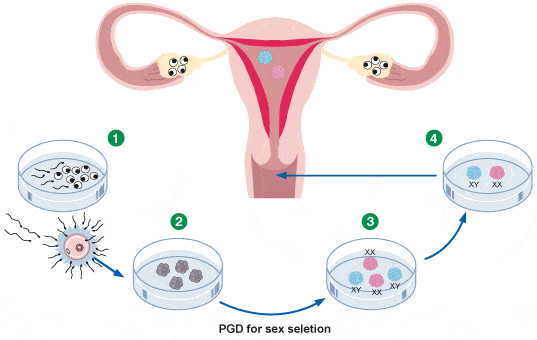Contact Us
- [email protected]
- +995 555 364288
- Mon-Fri: 08:00AM - 07:00PM
- Sat: 8:00AM - 5:00PM
IVF sex selection, often incorrectly referred to as “gender selection” is a process where embryos are selected by their sex chromosomes during an IVF cycle in order to produce a male or female offspring, according to the wishes of the parents.
The primary method for sex selection is through a procedure called pre-implantation genetic diagnosis (PGD). As part of an IVF cycle, many embryos will be created and then typically the best quality embryo will be selected for implantation into the woman’s uterus. PGD is performed before implantation to check for genetic defects, but the same process can identify the sex of the embryos. An embryo of the desired sex is then selectively implanted into the woman’s uterus.
PGD sex selection is uncommon and typically used for medical reasons, specifically, when couples know they are carriers for genetic conditions linked to biological sex. These X chromosome linked disorders are primarily found in males.
Outside of medical reasons, use of sex selection can be controversial. We suggest the future parents not to deliberately choose the sex of the baby but to allow it to happen randomly. Nonetheless there is the possibility to select the sex of the future child according to the wish of the parents if they agree so.
The cost of sex selection is directly associated with the cost of the PGD test. In our case the cost varies from 1.600 euro in the case of PGD of 5 chromosomes to 2.500 euro in the case of PGD of 24 chromosomes. We recommend all our patients to perform PGD as an extra guarantee that the future child will be free of any genetic disorder. At the same time the PGD allows for the selection of the sex of the child without any extra cost (only the cost of PGD).
